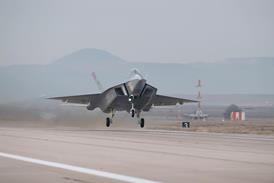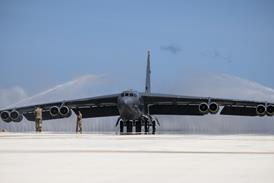R-1340 Wasp
In 1925, the Wasp was a leap forward in aircraft power, reliability, and performance – one that rocketed the trajectory of aviation technology into the post-war era. Its nine-cylinder, air-cooled radial engine quickly became the standard for military and commercial aircraft for its durability, ease of maintenance, and high power-to-weight ratio capable of producing up to 600 horsepower.
With continual innovation of radial engine technology, the Wasp developed into a family of increasingly powerful engines, whose reliability and performance in extreme conditions were critical to Allied success in the Second World War. Total wartime production exceeded 360,000 engines including licensed manufacturers, and variants like the Twin Wasp and Double Wasp powered many iconic military aircraft of the time, including the Grumman F4F Wildcat, Douglas C-47 Skytrain and Vought F4U Corsair.
Type: Nine-cylinder, supercharged, air-cooled, radial piston engine
Displacement: 1,344 cubic inches
Dry weight: 422kg (930lb)
Power rating: 600hp
First run: 1926
First flight: 1926
Production: 34,966 (1926-1960)
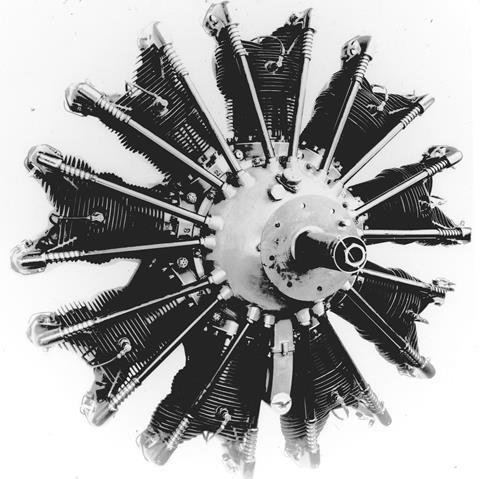
J57/JT3C
The J57 and its commercial JT3C equivalent was the first axial-flow dual-spool turbojet engine designed and produced by Pratt & Whitney, which enabled far superior performance and fuel burn than anything the competition had to offer. Employing the dual spool and redesigning the earlier JT3 prototype to incorporate the “Wasp waist” compressor flow-path configuration resulted in improved efficiency and 600lbs in weight savings.
The engine powered the McDonnell F-101 Voodoo as well as early models of the Boeing B-52 and Boeing 707, among many others.
Type: Axial-flow-dual-spool turbojet gas turbine turbojet engine
Power rating: 10,500lb thrust (13,750lb thrust with water injection; 19,600 with afterburner)
Weight: 1,905kg to 2,365kg
First run: 1950
First flight: 1951
Production: 21,170, including 6,202 produced under licence by Ford (1951-1965)
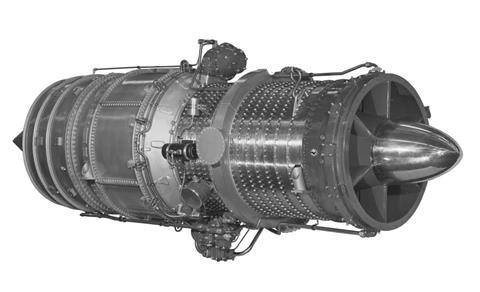
TF33/JT3D
Developed from the J57/JT3C, the TF33 is the United States Air Force designation for the Pratt & Whitney JT3D commercial engine, which boasts decades of proven performance in both military and civilian service. First flown over 60 years ago, there are nearly 1,000 engines in service today with USAF and other customers around the world. Since its first flight, the TF33 engine has accumulated more than 72 million flight hours, most while powering the Boeing B-52 bomber.
Commercial applications for the JT3D include the Boeing 707 and Douglas DC-8.
Type: Turbofan
Power rating: 8,700-19,000lb thrust
Weight: 2,089 kg
First run: 1958
First flight: 1959
Production: 5,413 (including 3,000 converted from JT3Cs) (1959-1985)
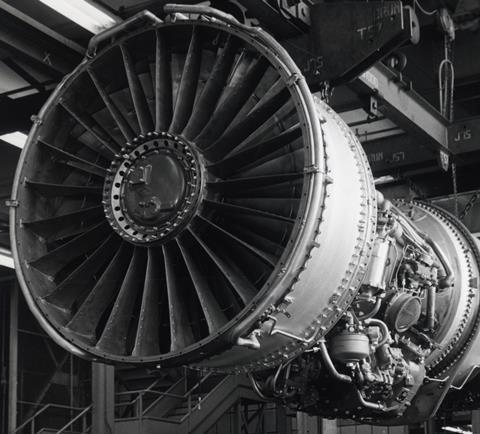
JT11/J58
The most secret and revolutionary engine of its era was designed by Pratt & Whitney to power the Lockheed SR-71 Blackbird, the world’s fastest turbojet-powered aircraft at Mach 3.2+.
Even before the downing of a Lockheed U-2 high-altitude reconnaissance aircraft and pilot Francis Gary Powers over Russia in 1960, Lockheed’s Skunk Works had been busy designing a series of successor aircraft which eventually evolved into the exceedingly fast YF-12 and spectacular SR-71 Blackbird that followed, both powered by the J58.
Of the many world records still held by the SR-71 Blackbird are a published maximum altitude of 85,068ft, set in 1976. In 1990, a SR-71 flew from Los Angeles to Washington DC in 1h, 4min, 20sec.
Type: Single-spool augmented turbofan with nine-stage compressor and two-stage turbine
Power rating: 30,000lb thrust
Weight: 2,720kg
First run: 1958
First flight: 1962
Production: n/a
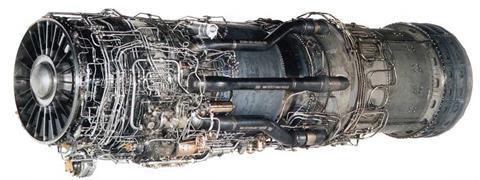
F100
Five decades ago, the Pratt & Whitney F100 engine powered both the F-15 Eagle and F-16 Fighting Falcon’s respective first flights. Today, the engine is a mainstay powerplant for more than 23 global air forces and is the only fourth generation engine offering operationally proven fifth generation technologies. The engine is still in production and was selected by Hermeus to help power its future supersonic and hypersonic vehicles, Quarterhorse and Darkhorse.
The engine has achieved over 30 million flight hours and powers 100% of the US Air Force’s operational F-15s.
Type: Low-bypass afterburning turbofan
Power rating: 24,000lb to 29,100 thrust (with afterburner)
First run: 1970
First flight: 1972
Weight: 1,377kg
Production: 7,300 (1970-)
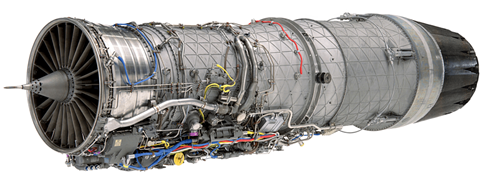
F119
Pratt & Whitney’s F119 turbofan engine is the world’s first fifth-generation fighter engine. The F119 combines stealth technologies and vectored thrust performance to provide maneuverability and survivability with a high thrust-to-weight ratio. The ability to operate supersonically without afterburner – known as supercruise – gives the F-22 exceptional combat performance without compromising mission range.
The F119 is equipped with several advanced technologies, including a three-stage integrally bladed fan powered by a single-stage low-pressure turbine and a high-pressure compressor with advanced 3D airfoil aerodynamics. The engine delivers unparalleled aircraft maneuverability with its unique two-dimensional pitch-vectoring exhaust nozzle.
Type: Twin-spool augmented turbofan
Power rating: 35,000lb thrust
First flight: 1997
Weight: 2,270kg
Production: 507 (2001-2013)

F135
The F135 is the world’s most powerful fighter jet engine and was designed for the F-35 Lightning II, the single-engine strike fighter developed by Lockheed Martin in conjunction with Northrop Grumman and BAE Systems. The engine powers all three variants of the F-35: the F-35A CTOL (conventional take-off and landing), F-35B STOVL (short take-off and vertical landing) and F-35C CV (carrier variant).
The F135 evolved from the F119 that powers the Lockheed Martin F-22, but delivers 20% more thrust and is approximately 1,000kg heavier. The engine is currently used by 20 countries, including Australia, Denmark, Italy, the Netherlands, Norway, Belgium, and the USA, and surpassed one million flight hours in March 2025.
Type: Turbofan
Power rating: 43,000lb (CTOL/CV)/41,000lb thrust (STOVL)
First flight: 2006
Weight: 3,290kg
Production: 1,300+ (2009-)

PT6
The PT6 turboprop from Pratt & Whitney Canada has been the undisputed leader in the general aviation segment for 60 years and today more than 70 variants power more than 130 types of aircraft, including helicopters. No other engine in the segment comes close to its more than 500 million flying hours. More than 64,000 engines have been delivered to power some 21,000 aircraft.
The latest version of the engine, the PT6 E-Series, powers the Daher TBM 960 and the Pilatus PC-12 NGX.
Type: Turboprop and Turboshaft
Power rating: 475shp to 2,300shp
First flight: 1961
Weight: 171kg to 301kg
Production: 64,000+ (1964-)
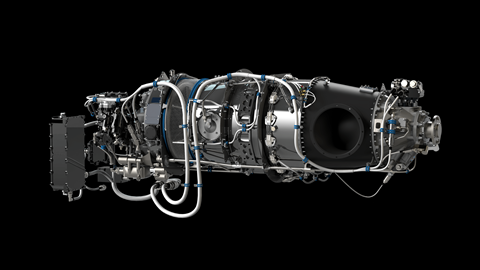
PW100/PW150
If the PT6 helped create the general aviation segment, the same could be said for the PW100 with regional turboprops, an area of the market that came into its own in the 1980s following US airline deregulation, which made it feasible to fly commuter aircraft with more than 40 seats.
The PW100 engine family was chosen to power several regional turboprops, including the ATR 42 and 72, the De Havilland Canada Dash 8, and the Embraer EMB 120 Brasilia, and continues to power many of these types in service today. The latest PW127XT model has also been selected for the Deutsche Aircraft D328eco, in addition to ATR’s 42 and 72.
Type: Turboprop
Power rating: 1,800shp to 5,000shp
First run: 1981
First flight: 1982
Weight: 391kg to 718kg
Production: 6,100+ (1984-)
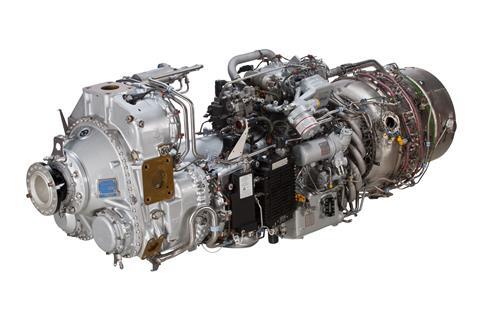
PW300
While the JT15D represented Pratt & Whitney’s foray into the business jet segment in the 1960s, the PW300 represented a further breakthrough, with features including full-authority digital engine control and a five-stage high-pressure compressor helping to secure a dominant position in the midsize segment.
Aircraft powered by the family, which includes four series and 12 individual models, include the Cessna Citation Latitude, the Dassault 7X, 8X and 2000LX/EX, the Bombardier Learjet 60 and other out-of-production types.
Type: Two-spool turbofan
Power rating: 4,700lb to 7,000lb thrust
First flight: 1988
Weight: 450kg
Production: 6,300+ (1989-)
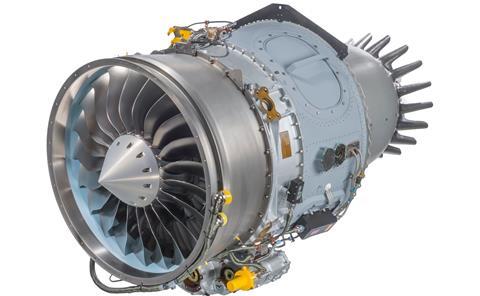
TF30
With its origins in a commercial turbofan project with Douglas Aircraft, the TF30 became the world’s first production afterburning turbofan, and powered the General Dynamics F-111 and Grumman F-14A Tomcat, among others.
Type: Afterburning turbofan
Power rating: 20,900lb thrust
First flight: 1964
Weight: 1,890kg
Production: n/a (1966-1986)
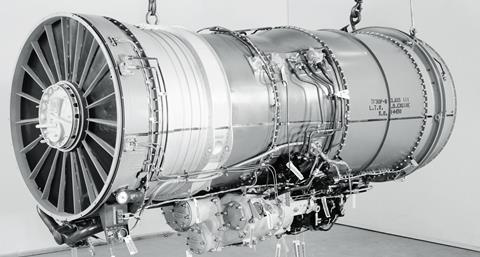
JT9D
This engine designed for a new generation of widebody airliners opened a new era in commercial aviation. The company’s first high-bypass-ratio turbofan introduced many advanced technologies in the areas of structures, aerodynamics and materials to maximise fuel efficiency and component durability. Since entering service in 1970, JT9Ds have accumulated more than 170 million engine flight hours. The JT9D powered the Boeing 747, 767, Airbus A300, A310 and the McDonnell Douglas DC-10.
Type: High-bypass Turbofan
Power rating: 48,000lb to 56,000lb thrust
First run: 1966
First flight: 1969
Weight: 4,150kg
Production: 3,200 (1970-1990)

JT8D
The JT8D was developed from the J52 that was designed for the US Navy to power the Grumman A-6 and the North American AGM-28 supersonic, nuclear-armed, air-launched cruise missile.
Its derivative, the JT8D, one of the most popular engines in aviation history, powered the inaugural flight of the Boeing 727, and was also the engine on the Boeing 737, Douglas DC-9, and Sud Aviation Caravelle. Today, more than 1,000 JT8Ds are still in service.
Type: Turbofan
Power rating: 14,000lb to 16,000lb thrust (standard configuration)
First flight: 1964
Weight: 1,500kg
Production: 16,000+ (1964-1985)
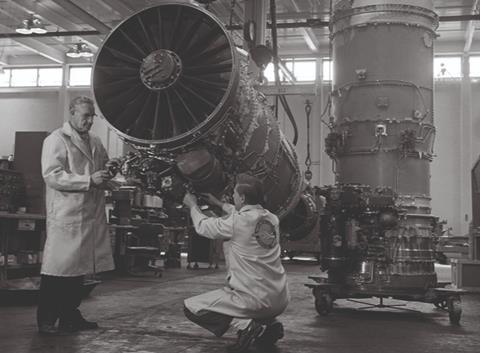
V2500
The V2500 was developed by the International Aero Engines consortium, where Pratt & Whitney is today the leading member, and selected as an engine option for the Airbus A320 family and McDonnell Douglas MD-90. With some 7,800 engines produced and more than 300 million flight hours, the V2500 has become one of the most successful commercial engines in aerospace history. It also powers the in-production Embraer C-390 Millennium military transport.
Type: Turbofan
Power rating: 22,000lb to 33,000lb thrust
First flight: 1988
Weight: 2,500kg
Production: 7,800+ (1987-)
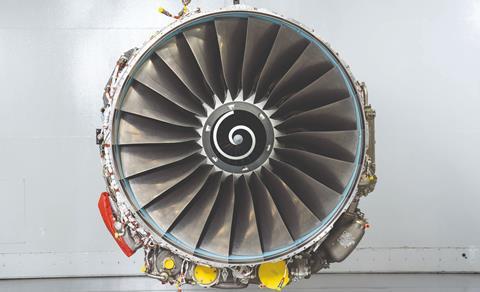
GTF Family
The GTF is one of Pratt & Whitney’s most important engines in its 100-year history. Adopting revolutionary geared turbofan technology, the engine enabled a 16% step change in fuel efficiency for a new generation of narrowbodies and large regional jets under development in the early 2000s.
Launched on the Mitsubishi Regional Jet in 2007, PW1000G family engines were later selected exclusively by Bombardier for the CSeries (now the Airbus A220) and Embraer for its E2 family. Airbus chose it as one of two engine options for its re-engined A320neo family.
Type: Ultra-high-bypass turbofan
Power rating: 15,000lb to 17,000lb thrust
First run: 2011
First flight: 2016
Weight: 1,720kg
Production: 2,300+ (2016-)
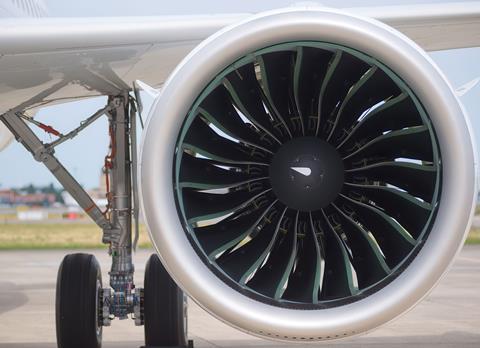
PW800
Pratt& Whitney Canada’s newest turbofan, the PW800 offers a double-digit improvement in fuel efficiency and powers the in-development Gulfstream G400 as well as the in-service G500 and G600, and the Dassault Falcon 6X. The PW800 was designed for a heavier class of business jets than the PW300 and shares a common core with the larger, geared turbofan PW1000G family for passenger airliners.
Type: Twin-spool turbofan
Power rating: 13,600lb to 16,000lb thrust
First run: 2012
First flight: 2013
Weight: 1,422kg
Production: 670+ (2018-)
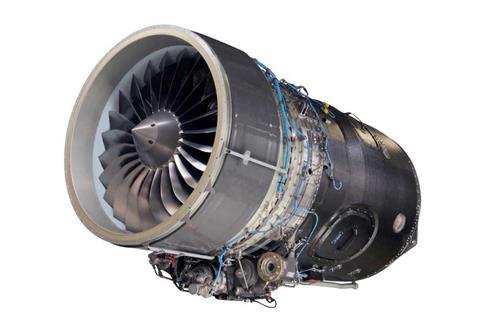
Pratt & Whitney at 100

To mark the centenary of Pratt & Whitney, FlightGlobal has partnered with RTX to produce a souvenir special looking at the legacy and future of one of the industry’s most powerful and influential brands.
- 1
- 2
- 3
- 4
- 5
- 6
- 7
- 8
- 9
- 10
- 11
 Currently
reading
Currently
reading
Pratt & Whitney at 100: Power generations – engines that shaped aviation
- 13




